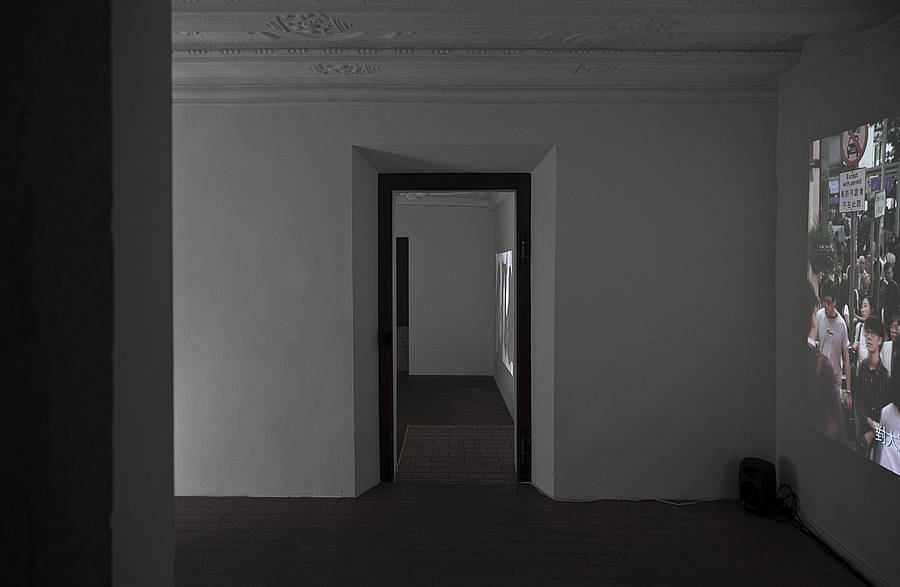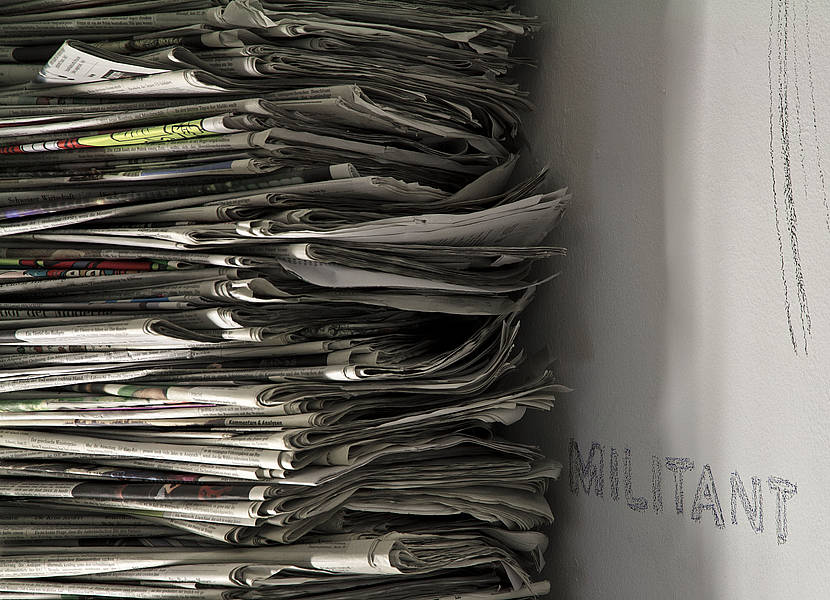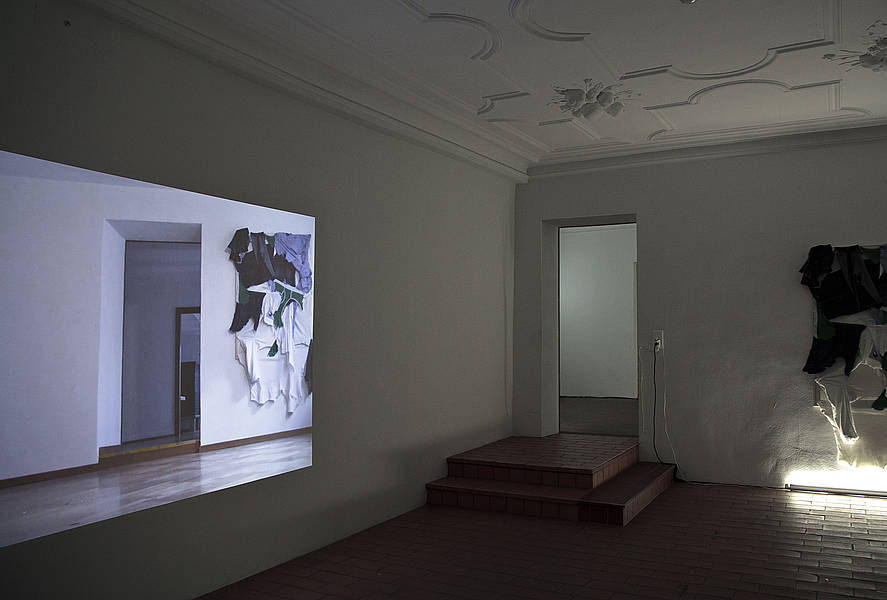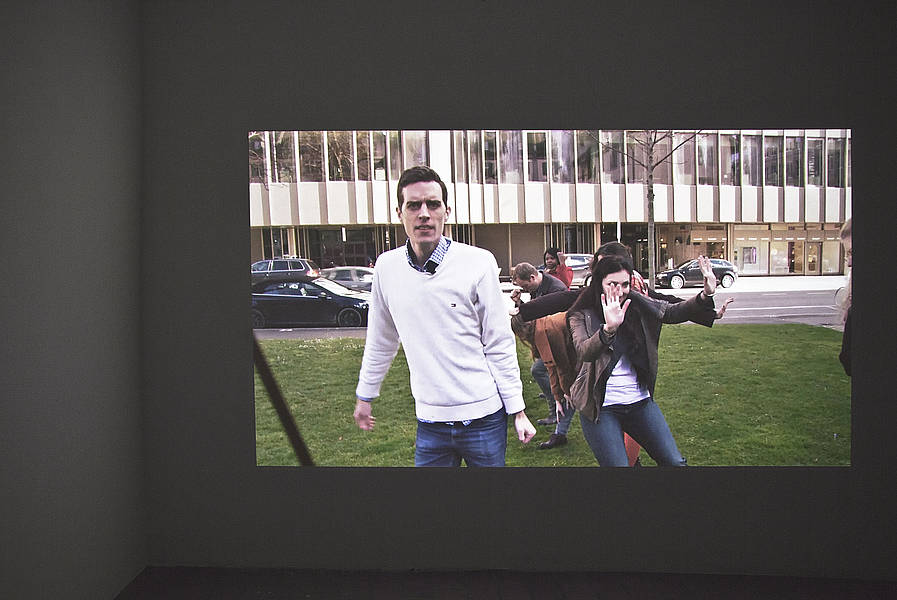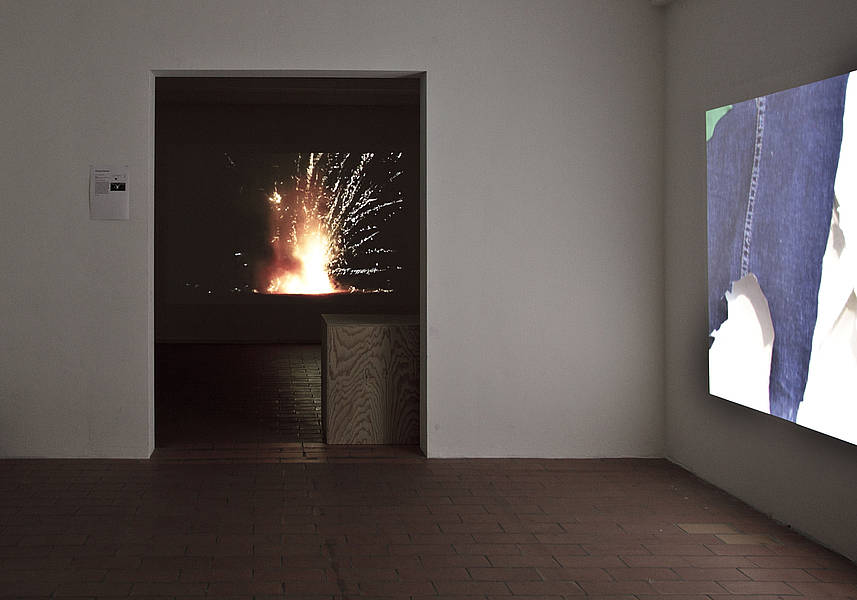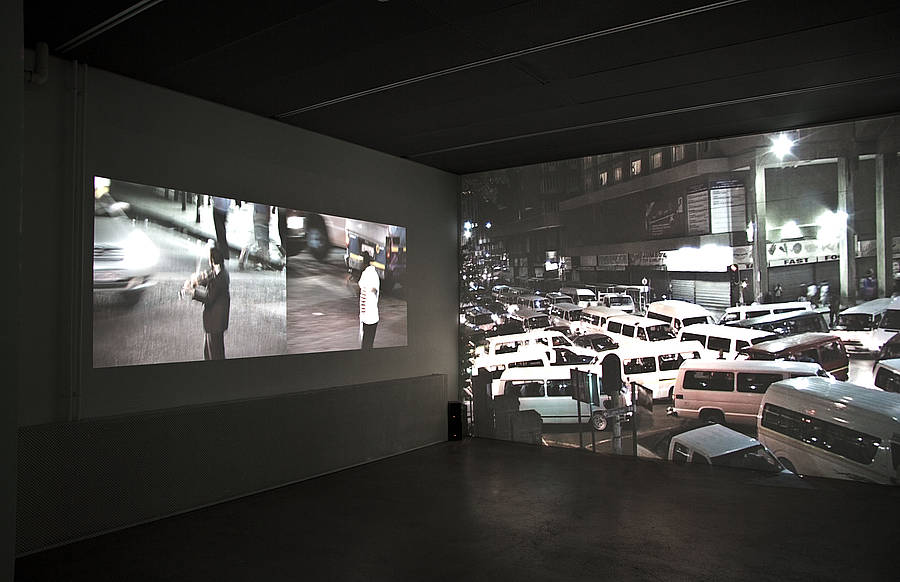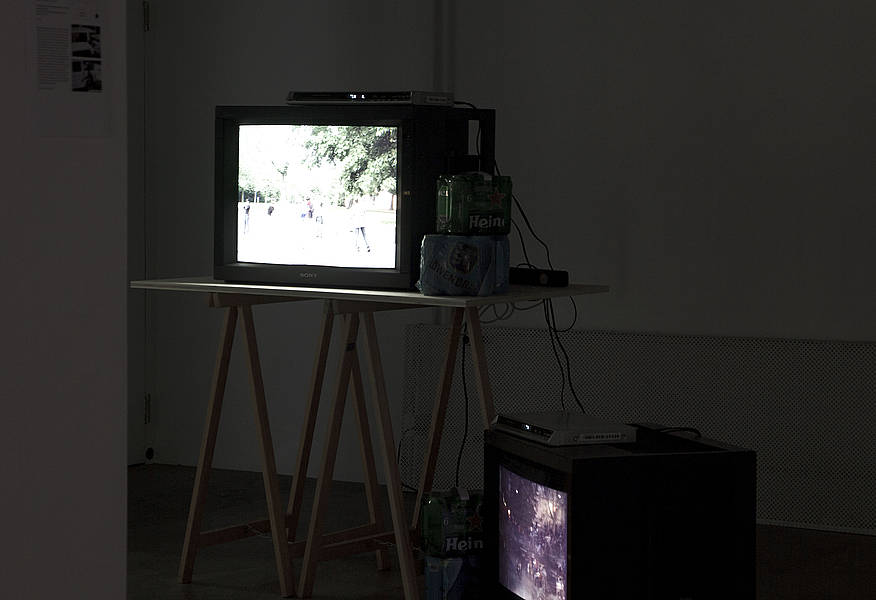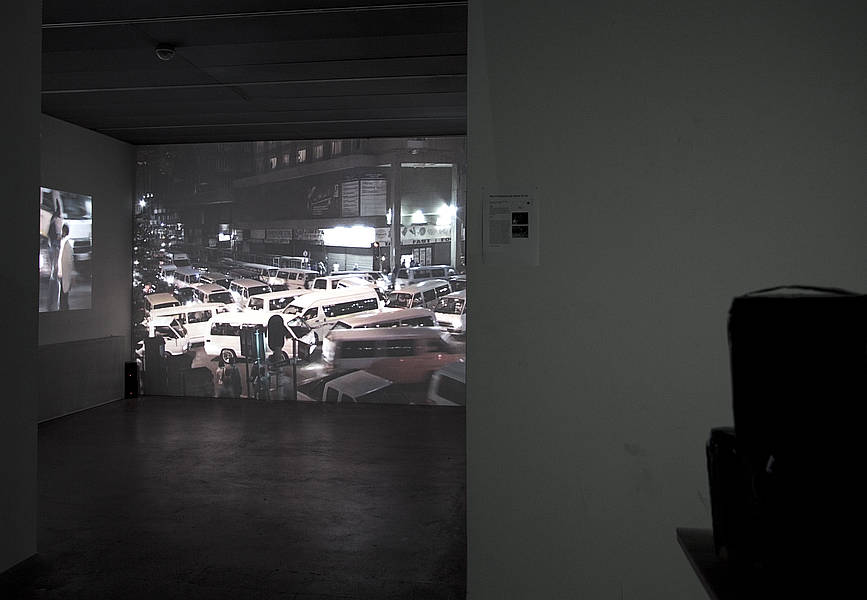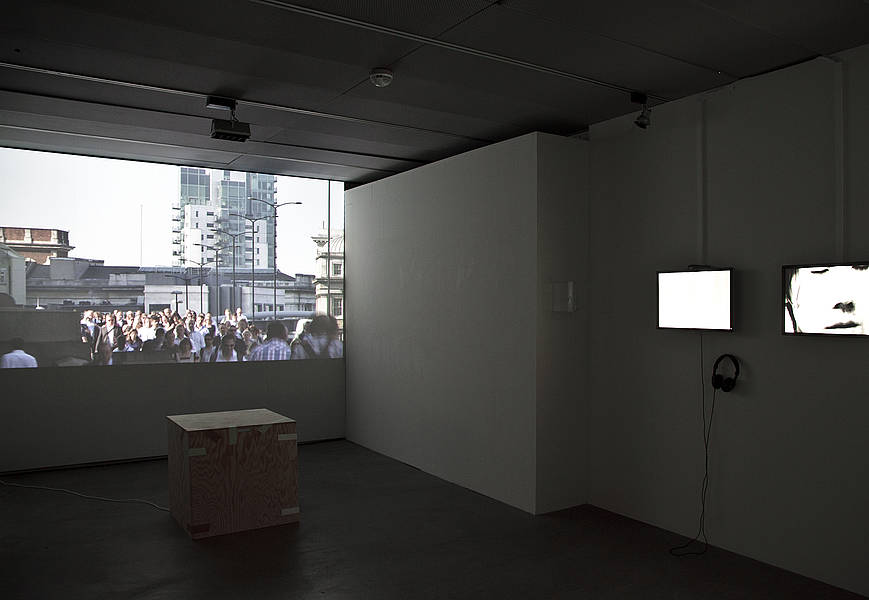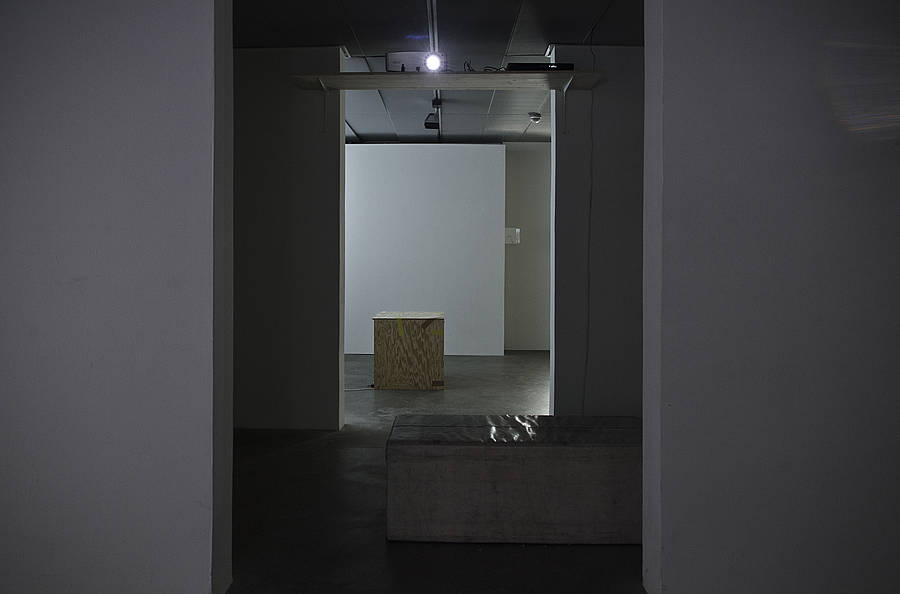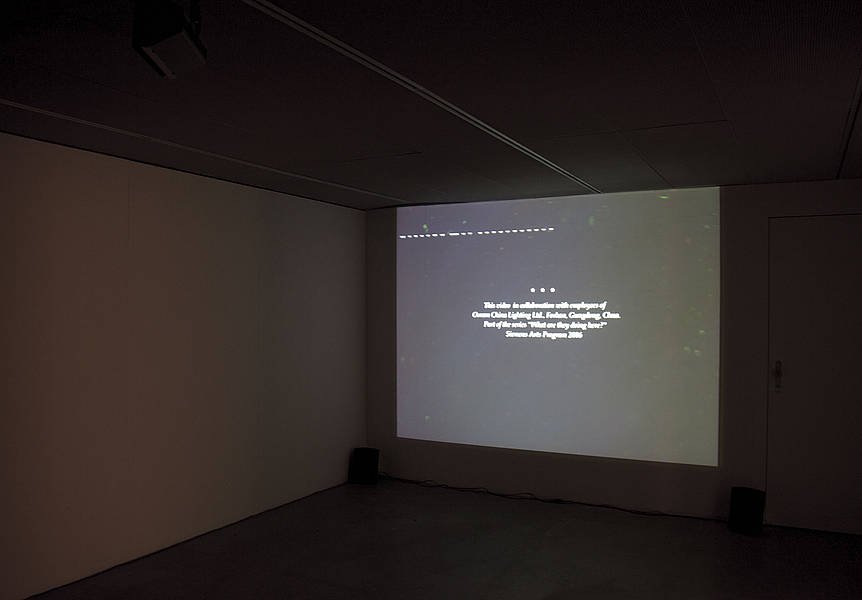It Is (Y)ours?
Fabian Chiquet, Clément Cogitore, Ellen Pau, Cai Fei, Christian Falsnaes, Tang Kwok Hin, Marianne Halter / Mario Marchisella, MAP Office, Cédric Maridet, Anne-Julie Raccoursier, RELAX
Exhibition from March 14 2014 till April 6 2014
Curated by Damian Jurt, Dorothee Richter / Hong Kong Inserts P. Müller
(e) Who owns the public sphere and how can we formulate expectations and contradictions within it? How can we develop alternative utopias? And how are communities, strategic alliances and movements formed? How do artists formulate their right to participation? And how do artists intervene in Cape Town, Hong Kong, Berne, Zurich or Cairo? These are circumstances that cannot be deferred, neither socially nor politically. They allow people to find each other for manifestations in the public or digital sphere. People who come together for a demonstration are driven by an energy which is marked by a mixture of a spirit of change, making demands, of action and persistence. Depending on the intensity and urgency, these can be seen to have a positive and celebratory character, or a disturbing and driven one. With this, the location of the manifestation in the public urban sphere is also addressed and examined. Here the digital sphere is the medium and means of communication which helps produce spatial practices. Political activism and social dynamics are cultural catalysts, which inscribe themselves into the aesthetics of the present and constitute these anew. Pop culture has a particular place here since it can be an expression of societal and political critique, yet at the same time it is a part of it, subordinates itself to it and participates in its development. Pop music can additionally achieve a clear aesthetic effect which visually enhances the auditory content. Pop culture and political activism help bring forth societal and political revolutions and thereby acquire an identity-forming character for whole groups and their concerns. It is within this framework that Hong Kong Inserts addresses artistic discourses with the urban sphere, in which the breach lines between public, private and digital space, but also between high and low specifically react to the context. In the anonymised, extreme architectural and temporal compression, it is frequently individual entities – often moved to action with music – which re-possess their living environment again and in a utopian manner. The exhibition project intends to take up this aesthetic, energy and intensity as a reminder of what is possible without blurring the specific conditions. Urban situations are shown with an aesthetics based on pop culture and sound, given an ironic twist and reinterpreted.
(g) Wem gehört der öffentliche Raum, wie können wir darin Ansprüche und Widersprüche formulieren, wie alternative Utopien entwickeln – und wie formieren sich Gemeinschaften, strategische Bündnisse und Bewegungen? Wie formulieren Künstler und Künstlerinnen den Anspruch auf Teilhabe? Und wie intervenieren KünstlerInnen in Kapstadt, Hong Kong, Bern, Zürich, Berlin, Kairo? Es sind Umstände, die keinen sozialen und politischen Aufschub dulden. Sie lassen Menschen für eine Kundgebung im öffentlichen oder digitalen Raum zusammenfinden. Menschen, die sich für eine Demonstration formieren, sind getrieben von einer Energie, die sich durch eine Mischung aus Aufbruchsstimmung, Forderung, Bewegung und Beharrlichkeit auszeichnet. Je nach Intensität und Dringlichkeit haben sie einen positiven, feierlichen Charakter, oder einen beunruhigenden, getriebenen. Der Ort der Kundgebung im öffentlichen Stadtraum wird damit auch als Raum der Aneignung thematisiert und ausgelotet. Der digitale Raum ist dabei Medium und Mittel der Verständigung, die räumliche Praxen mitproduziert. Politischer Aktivismus und gesellschaftliche Dynamiken sind kulturelle Katalysatoren, die sich in den Ästhetiken der Gegenwart einschreiben und sie neu konstituieren. Die Popkultur hat hier einen besonderen Stellenwert, da sie Ausdruck sein kann von Kritik an Gesellschaft und Politik, jedoch gleichzeitig Teil von ihr ist, sich ihr unterwirft oder sie mitgestaltet. Popmusik vermag zudem eine klare ästhetische Wirkung zu erzielen, die den auditiven Gehalt visuell unterstützt. Popkultur und politischer Aktivismus bringen auf ästhetischer und musikalischer Ebene gesellschaftliche und politische Umwälzungen mit hervor und bekommen dadurch einen identitätsstiftenden Charakter für ganze Gruppen und deren Anliegen. Hong Kong Inserts thematisiert in diesem Rahmen künstlerische Auseinandersetzungen mit dem urbanen Raum, in denen die Bruchlinien zwischen öffentlichen, privaten und digitalen Raum, aber auch zwischen high und low spezifisch auf ihren Kontext reagieren. In den anonymisierten, extremen architektonischen und zeitlichen Verdichtungen sind es häufig individuelle Körper – oft mit Musik in Bewegung gebracht –, die sich ihren Lebensraum wieder und utopisch aneignen. Das Ausstellungsprojekt will diese Ästhetik, Energie und Intensität aufnehmen, daran erinnern, was möglich ist, ohne die spezifischen Bedingungen zu verwischen. Urbane Situationen werden mit Ästhetiken von Pop und Sound gezeigt, ironisch gewendet und re-interpretiert.
